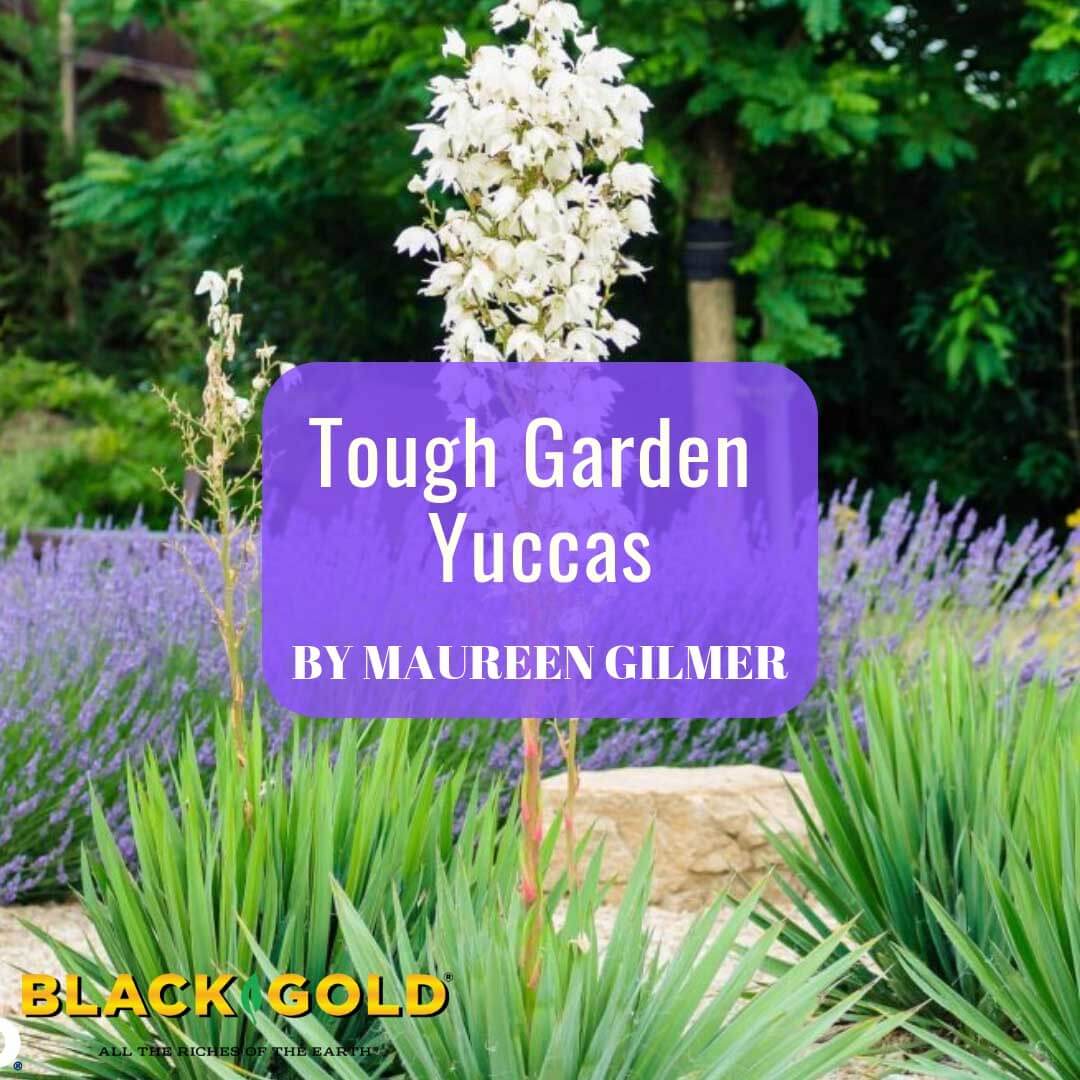
“This flower was made for the moon, as the Heliotrope is for the sun…and refuses to display her beauty in any other light.” This lovely Victorian quote, taken from the 1878 edition of Vicks Monthly Magazine, set off a fad for yucca plants. Though they flower in the sun, their blossoms become fragrant at dusk, releasing a seductive scent to draw their pollinators, yucca moths (Tegeticula and Parategeticula moth species). Yucca species depend on specific yucca moths for pollination, and yucca moths lay their eggs in yucca flowers where the young feed on some (but not all) of the developing seeds. Both moths and plants need one another for survival.
Growing yucca is a snap if you choose the right one. With so many species and new varieties available at garden centers, it can be mind-boggling. The best choices for those in yucca country are locally native species available in outdoor garden centers. These will be the best adapted to your region and most likely to bloom well.
Central and Eastern Yucca for Landscapes
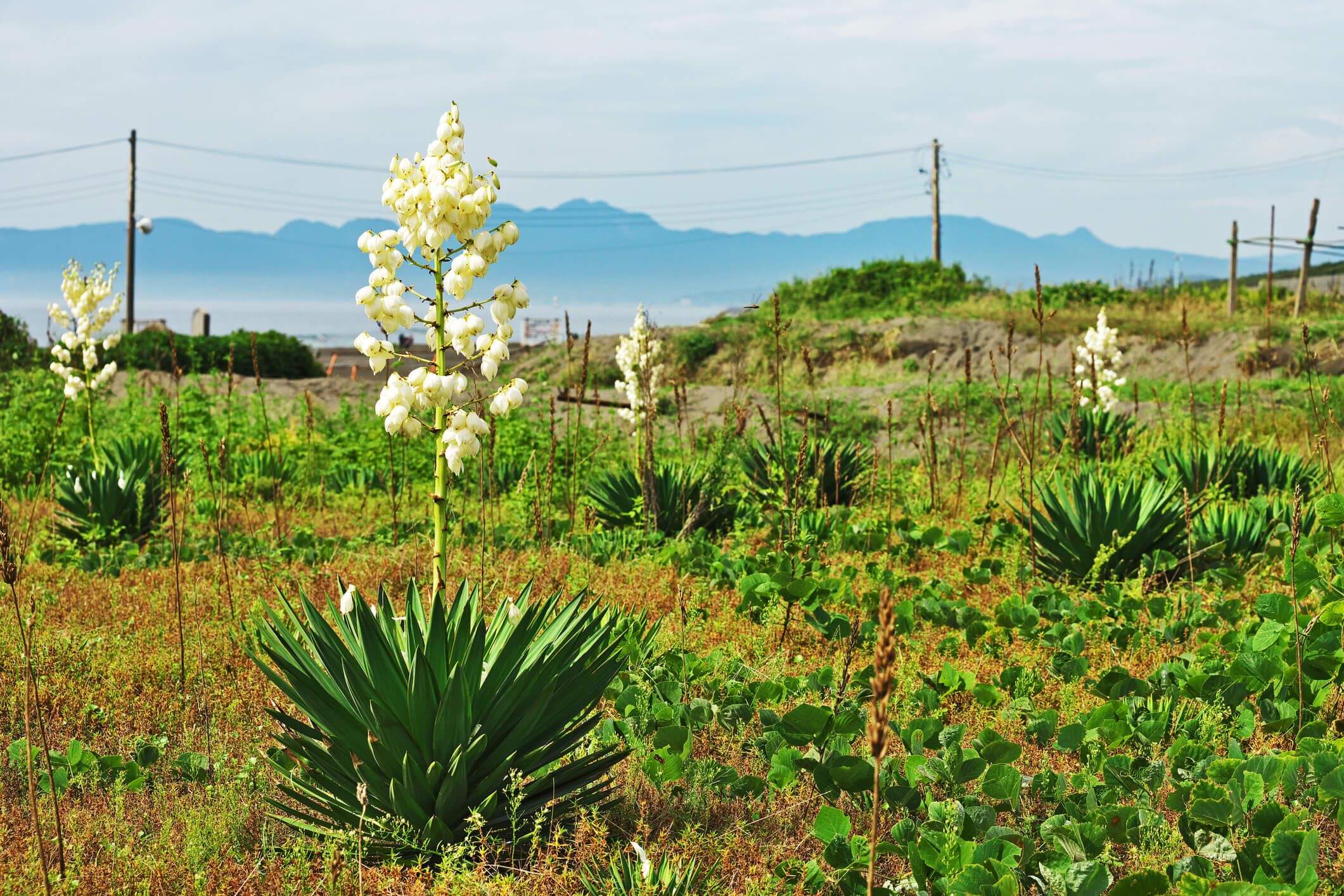
Yuccas may form single clumps, multiple clumps, or be tree-like. Clump-forming species are more prevalent in the East and Southeast coastal regions. Common garden-worthy forms include Adam’s needle (Yucca filamentosa), an eastern native that inhabits fields and open woodlands, the southeastern moundlily yucca (Y. gloriosa and Y. gloriosa var. recurvifolia) that inhabits coastal landscapes, and the Central US soapweed yucca (Y. glauca) of the dry plains. Spanish bayonet (Y. aloifolia) is a trunked species that inhabits southeastern coasts. These are more tolerant of regular rainwater and soils with clay, but all require well-drained soil and will withstand drought.
Western Yucca for Landscapes
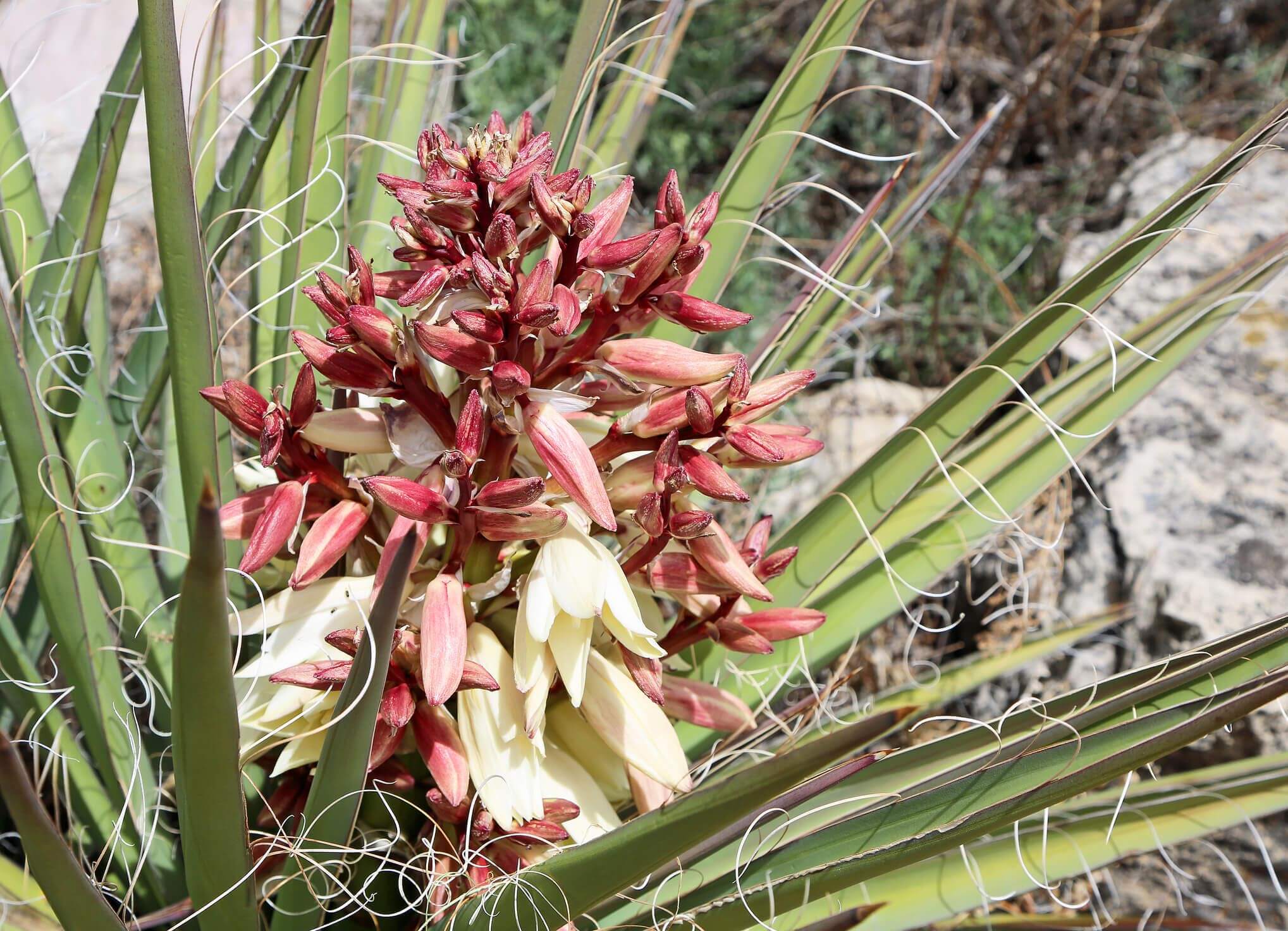
In the arid west, Yucca species are adapted to perpetual wind and nonexistent humidity. Species such as the clump-forming banana yucca (Y. baccata) and tree-like beaked yucca (Y. thompsoniana) have thicker leaves plus a hard outer skin that make them super desert hardy, but painfully slow growing. That means these are best purchased as mature specimens because young plants take so long to reach a visible landscape size. Arid yucca prefer south-facing, sloping ground with rapid drainage or naturally porous soils. That’s why it’s essential to know the origin of any yucca you’re considering, to make sure you get a proper fit with your microclimate.
Landscape yucca of all kinds have been getting a makeover; ordinary green-leaf species are now offered as variegated cultivars that you can buy at garden centers. These feature brightly striped or blue leaves and compact versions that are ideal for container gardens. Variegated forms may bring shades of bright gold, ivory, and mint green into the garden for year-round color.
Growing Yucca in Gardens
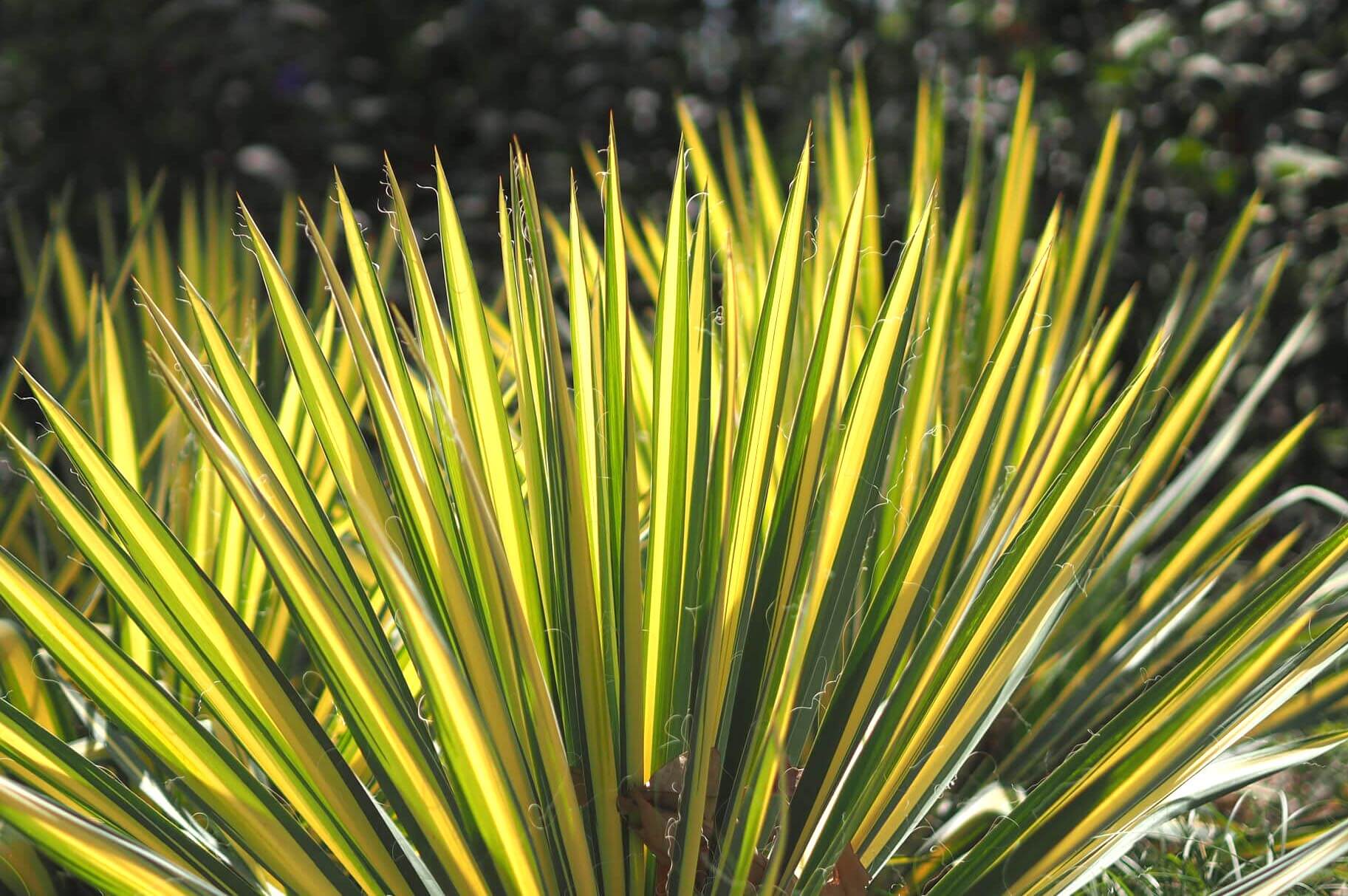
In the landscape, some yucca species develop a trunk-like growth with age, so they get taller with time. Others spread laterally, producing large clumps around the mother plant. Since there are so many species in cultivation, the list below identifies the most widely grown and available species for gardens. Different cultivated varieties may be available at the garden center, and though they may look different, grow them as you would the parent species.
Provide your yuccas with soils that drain well. Sandy or gravelly soil is often preferred, though Adam’s needle can withstand loamy soils. Be sure you know the hardiness of these sun lovers before planting them in the garden. Most landscape species are remarkably cold hardy, but the lack of winter light may be problematic for overall vigor. Southwestern species cannot withstand winter moisture.
Growing Yucca in Pots
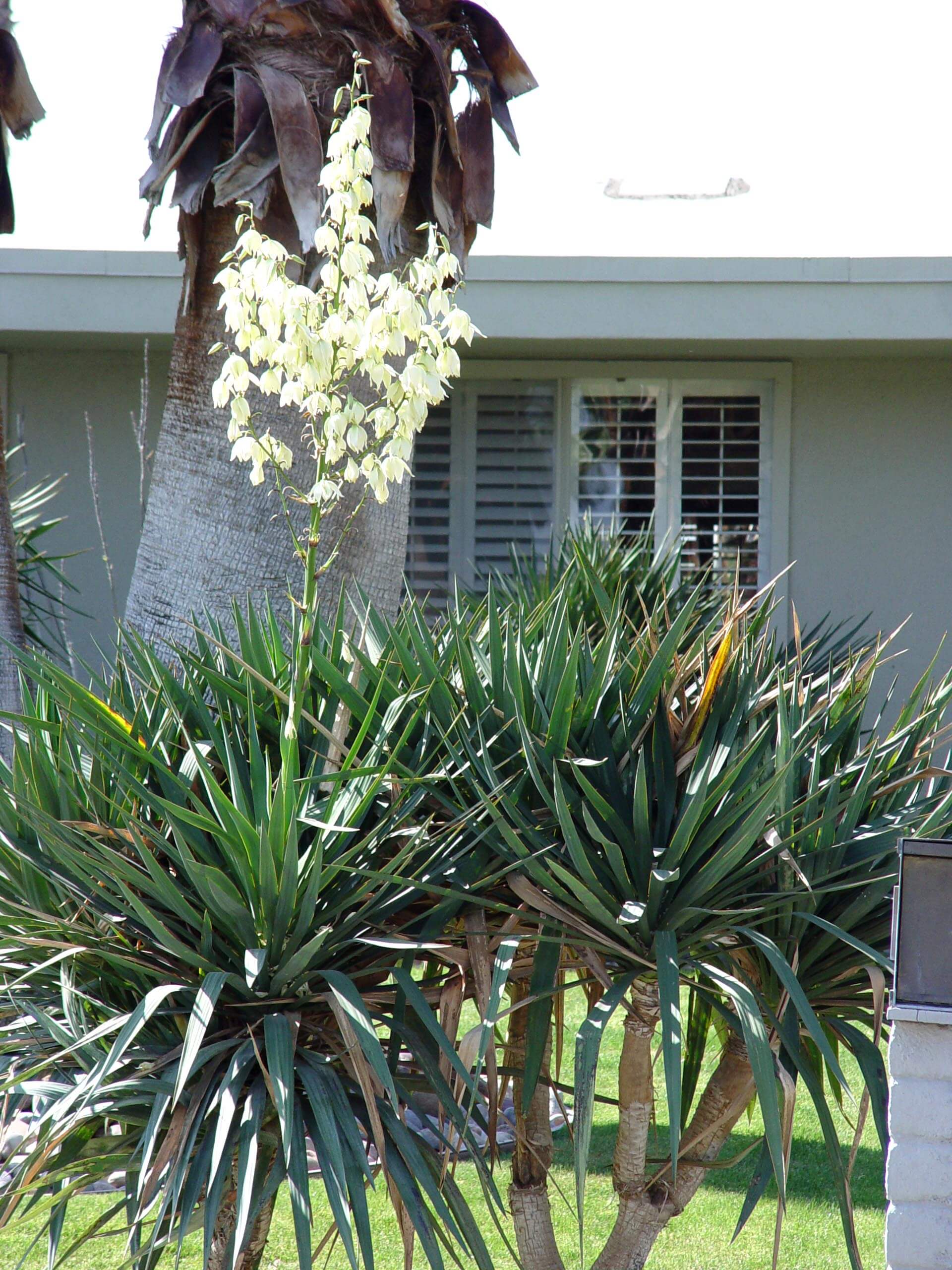
When growing yucca in a large pot, it’s best to make sure there is optimal flow for drainage. If you create a small gap between the drain hole and the underlying surface or saucer, the pot will drain more freely. Take at least 2 pieces of old tile, and slide them under the pot where you can’t see them. It is important to “gap” the pot with any arid plant grown in containers.
Juvenile yuccas do beautifully in pots. Plant them in porous Black Gold Cactus Mix instead of ordinary potting soil, so there’s less chance of overwatering them. Buy a youngster for a cute matching pot to enjoy up close. As it grows, pot it up into larger containers until it becomes a stunning mature patio specimen.
Unlike agaves that bloom once at the end of life, yuccas bloom each year with stalked iridescent sprays of snow-white blossoms. They shine in the moonlight reflecting light to lure their moth pollinators, so be sure to plant them where you can’t miss the show for full-moon viewing.
List of Common Yucca Species for Gardening
| Latin Name | Common Name | Form | US Region | Zone |
| Y. aloifolia | Spanish Bayonet | Tree-like | SE | 7-11 |
| Y. baccata | Banana Yucca | Clumping | SW | 7-11 |
| Y. filamentosa | Adam’s Needle | Clumping | SE | 4-9 |
| Y. gloriosa | Spanish Dagger | Tree-like | SE | 6-11 |
| Y. glauca | Soapweed Yucca | Clumping | C | 4-10 |
| Y. thompsoniana |
Beaked Yucca | Tree-like | SW | 6-11 |


